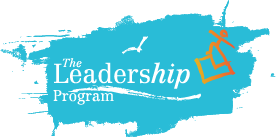Empathy is the Antidote: Empowering Upstanders through Practice

"Empathy", David Drexler, https://www.flickr.com/photos/drexler/
Our students often ask us, what can I do if I see someone bullying someone else. This is a great question as most people, not just children, don’t know what to do when they witness a bullying situation.
In fact, Upworthy recently did a piece on Finland, which has one of the most successful education systems in the world. They highlighted a new and highly effective bullying prevention program that Finland is using called, KiVa. In their program, like in ours, they focus on teaching ‘bystanders’ how to be more supportive and empathetic to the victims in the bullying situations. They do this using video games and simulations. Students will find themselves witnessing a bullying situation and will have to decide on what they will do in response. It gives the students the opportunity to practice ways to respond and then see how their actions lead to certain outcomes.
In our program, Empowering Upstanders, we do similar type trainings for the students, instead with a face-to-face interaction that uses role plays. We act out bullying scenarios that are relevant to the students and then students practice strategizing what they would do in the role of witness/bystander in those situations. Again, we place the spotlight on the witness/bystander and we have them practice ways they would interact with the bullying scenario. Students experience live what happens based on the choices they make. If they aggressively confront the bully and tell them to stop then they can experience the situation getting worse. We then stop the scene, discuss what we observed based on the choices that were made, give some alternate strategies for the witness/bystander to try, and then give them another opportunity to explore. We teach our students the goal is always to make the situation better or cooler or calmer. Even though intentions may be good in trying to be an Upstander, if the situation starts getting worse, than it is time for another tactic.
That is why the most important part is the support we provide for the person being hurt (as seems to be the case in the KiVa program). This empathy piece combined with a pro-active awareness to respond and help diffuse bullying situations is at the core reducing bullying incidents. When we take the focus off the bully and place it on the witness/bystander with the goal of becoming Upstanders, we begin to shine the light on the positive.
Click the link to see some of our Upstanders in action.


Comments [0]
Click here to read/write comments